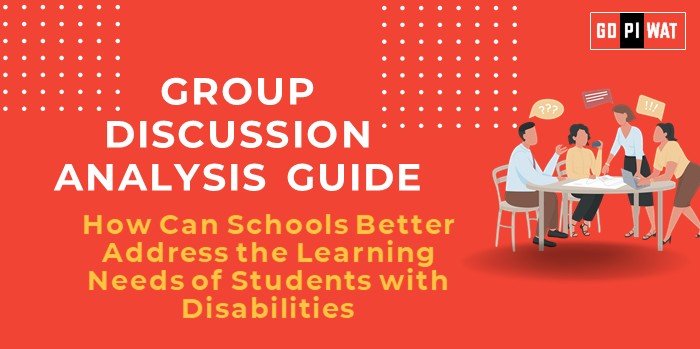📋 GD Guide: How Can Schools Better Address the Learning Needs of Students with Disabilities?
🌐 Introduction to the Topic
Context Setting: Education systems globally are striving to ensure inclusivity, yet students with disabilities often face barriers that hinder their learning potential. Addressing these needs is critical for equity and achieving universal education goals.
Background: The concept of inclusive education has evolved significantly since UNESCO’s Salamanca Statement (1994), emphasizing that children with special needs should learn in regular schools. India’s Rights of Persons with Disabilities Act (2016) further underscores this priority.
📊 Quick Facts and Key Statistics
– 🎓 School Enrollment Rate: Only 61% of children with disabilities attend school (UNICEF 2022).
– 💻 Assistive Technologies Market: Valued at $2.9 billion in 2023, projected to grow due to demand for inclusive learning tools.
– 🌍 Global Benchmark: Finland leads in inclusive education practices, integrating 99% of children with disabilities in mainstream schools.
👥 Stakeholders and Their Roles
- 🏛️ Government Agencies: Draft policies, fund infrastructure, and regulate inclusive education standards.
- 🏫 Schools and Teachers: Adapt curriculums, train in special education techniques, and deploy assistive tools.
- 👨👩👧👦 Parents and Community: Provide support and advocacy for necessary accommodations.
- 💼 Technology Providers: Develop innovative solutions like text-to-speech software, sensory-friendly classrooms, and interactive e-learning tools.
🏆 Achievements and Challenges
✨ Achievements:
- ✔️ Introduction of the Samagra Shiksha Abhiyan to improve educational access for children with disabilities.
- ✔️ Increased adoption of digital learning aids and specialized training programs for educators.
- ✔️ Implementation of inclusive education policies in progressive states like Kerala.
⚠️ Challenges:
- 📖 Limited teacher training in special education.
- 🏫 Insufficient infrastructure, especially in rural schools.
- 🛑 Stigma and societal barriers affecting inclusivity.
💡 Structured Arguments for Discussion
✔️ Supporting Stance:
“Inclusive education promotes social cohesion and ensures that no child is left behind.”
❌ Opposing Stance:
“Mainstream schools may lack the resources or expertise to adequately support children with disabilities.”
⚖️ Balanced Perspective:
“While progress is evident, more investment and training are essential for holistic implementation.”
🧠 Effective Discussion Approaches
📝 Opening Approaches:
- 📊 “Statistics reveal that 40% of children with disabilities in India drop out of school by the age of 10. What strategies can prevent this?”
- 📚 “The rise of assistive technologies offers hope for inclusive education. But how feasible are they in low-income settings?”
🛠️ Counter-Argument Handling:
- “While some argue mainstream integration overburdens teachers, evidence from Finland shows that proper training reduces such challenges.”
🔍 Strategic Analysis of Strengths and Weaknesses
💪 Strengths:
- ✔️ Established legal framework.
- ✔️ Emerging tech solutions.
❌ Weaknesses:
- 🚧 Funding gaps.
- 🚧 Societal stigmas.
🌟 Opportunities:
- 📈 Collaboration with global education leaders.
⚡ Threats:
- ❓ Persistent inequalities.
- ❓ High dropout rates.
📈 Connecting with B-School Applications
Real-World Applications: Exploring innovative business models for inclusive education tools.
Sample Interview Questions:
- 💬 “What role do public-private partnerships play in advancing inclusive education?”
- 💬 “How can educational startups address the needs of disabled students?”
Insights for B-School Students: Analyzing cost-effective assistive technologies and their scalability in developing countries.


